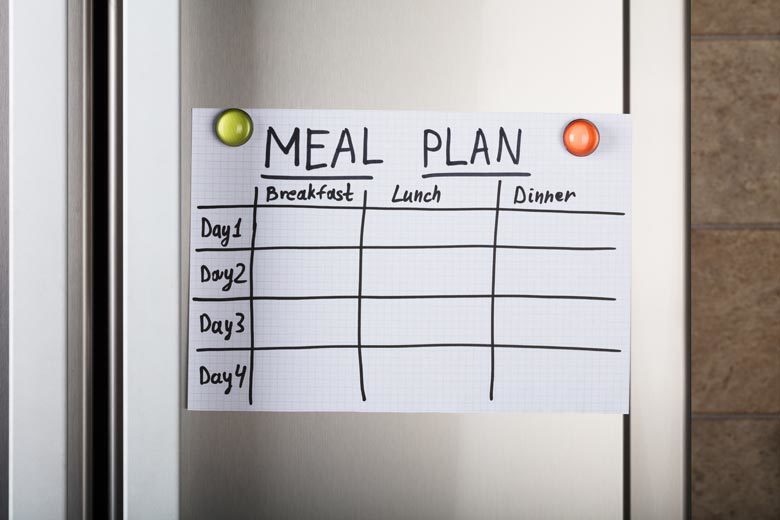
Meal planning is a great way to have some structure in the week that helps make life run a little smoother.
When I approach meal planning, it is simply having a flexible plan for the week, a few recipes, a grocery list and a plan to execute.
- Lets start with the plan. This is typically a brainstorming session with the family or roommates to decide what nights are busier and will require quick dishes or leftovers, which nights are you more likely to want to eat out and any other special plans that would make sense to include.
- Now that you know what is on your weekly schedule, you can decide on how many nights you would like to cook at home. I usually recommend starting with two to three planned dinners per week and expanding on that. I have been meal planning for a while and we do not typically plan more than three to four dinners for the week (that allows for leftovers and dinners out). Start with two to three dinners and choose your recipes. Write this down. I aim to cook fish dishes at the beginning of the week (for smelly trash purposes) and food safety issues. I also recommend making recipes that make large portions, like slow cooker meals, toward the beginning of the week, so they can provide leftovers for other dinners or lunches.
- Make your grocery list based off your recipes. Then expand your list to include any pantry essentials you are low on, breakfast and lunch items, and snacks. Tip: choose two breakfast options to rotate throughout the week. For example, toaster waffles with hard-boiled eggs and toast with peanut butter or avocado. You can always buy family staples like oatmeal and cereal to have when cooking in the morning is not going to happen. For lunches, we can account for some days to include leftovers and others to have items on hand for sandwiches, salads and snacks like yogurt, chips, pretzels and string cheeses. The idea is to shop on Sunday or Monday and be left with minimal food on the following weekend. That way you are eating most of your groceries, waste is limited and money is saved!
- Time to execute! This means a little meal prep. Decide what you can do in 30 to 60 minutes on the day you go shopping to make your weekdays and nights easier. Can you batch cook some chicken breasts? Maybe you can cook all the rice you need for the week. Some other options include:
- Make a few portions of overnight oatmeal
- Roast all your sweet potatoes to add to salads
- Make homemade granola
- Boil all your eggs for the week
- Wash and chop vegetables like carrots, kale, onions and celery
- Wash and portion out fruits like grapes or melon.
You don’t have to do it all — just a few things that will make life a little easier.![]()
Those are my four steps to getting your started with meal planning. It will take a few weeks to get the groove, and to find what works. The idea is to save you time and stress, so if you find certain aspects of this plan do not make your life easier, please modify! Like most things in nutrition, there is no one-size fits all — you have to make it work for you and your family.


